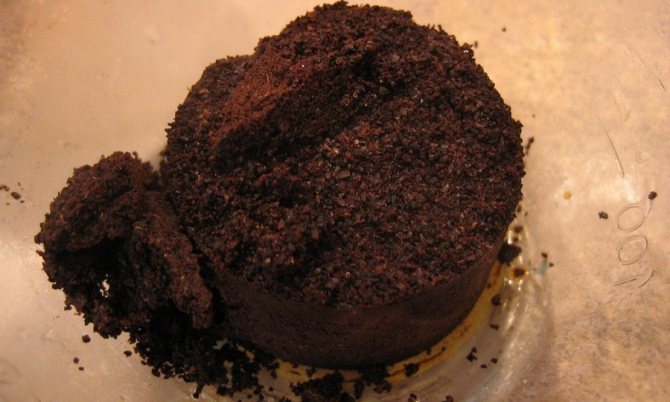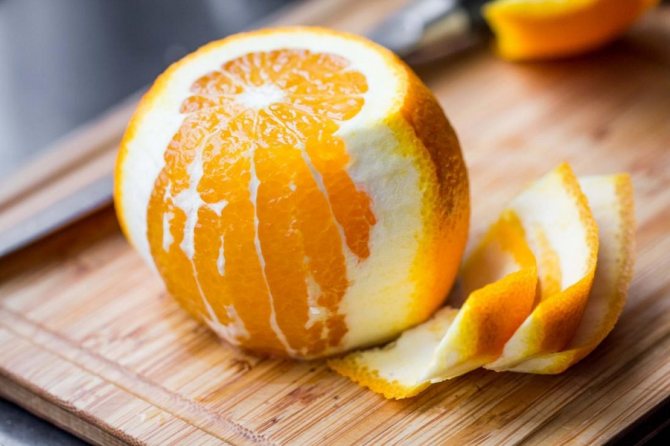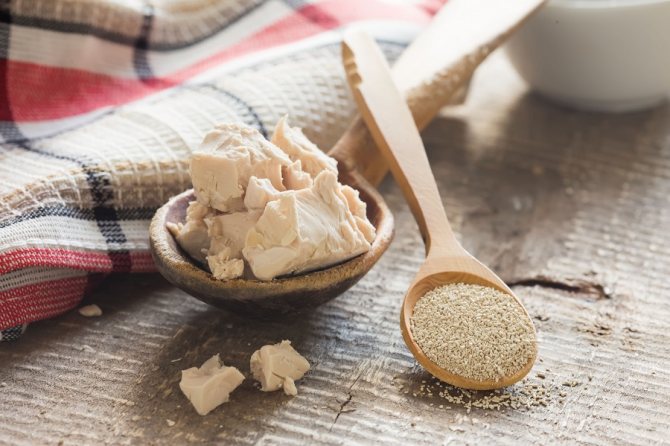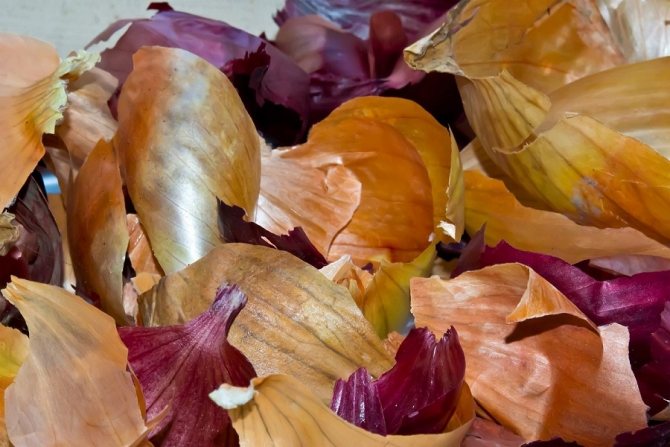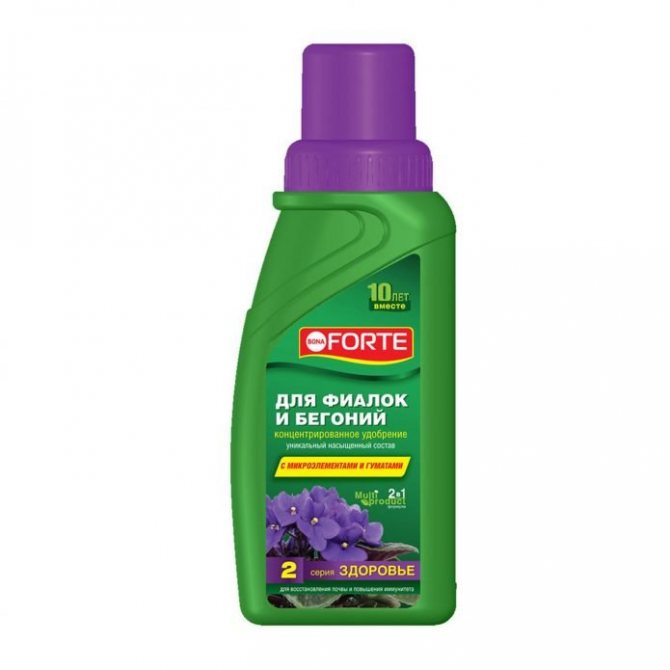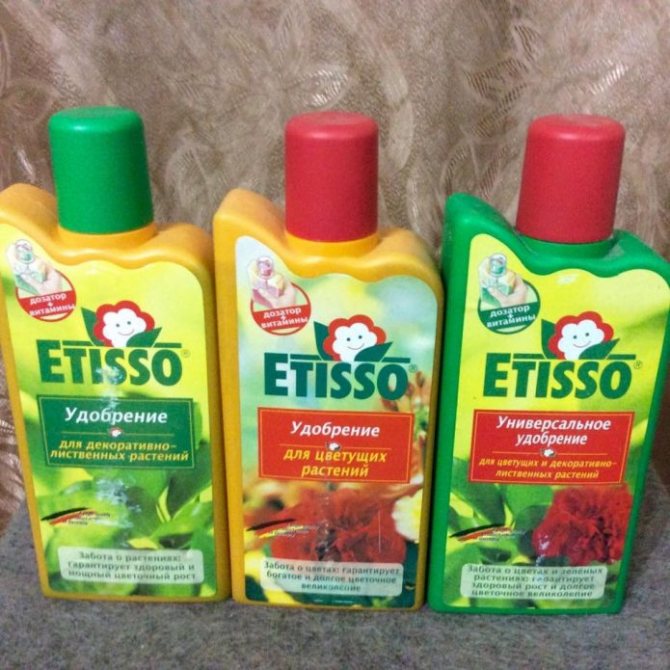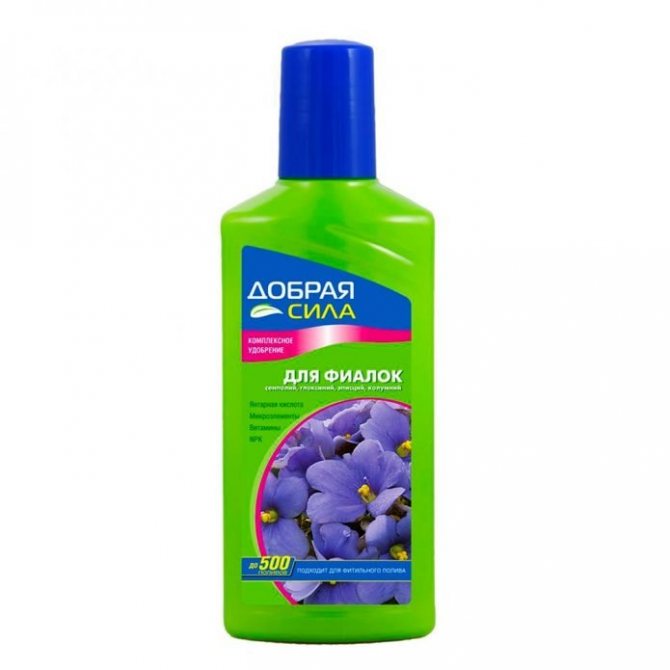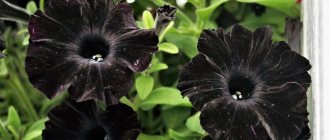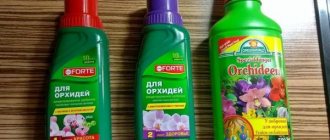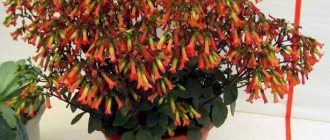Favorite Saintpaulias have not only a special appearance, but also a very specific character. The cultivation of this plant bears little resemblance to the classic care of indoor crops. And even relatives of the Uzambar violets from among the Gesnerievs require a slightly different approach. Irrigation is often referred to as the “weirdest” point of care for violets, which prefer non-standard watering to the classic method. But the approach will have to be changed in feeding. The rapid growth of rosettes and abundant flowering lead to the fact that all violets are extremely dependent on the frequency of water procedures and the composition of fertilizers. And mistakes with them are absolutely unforgivable.
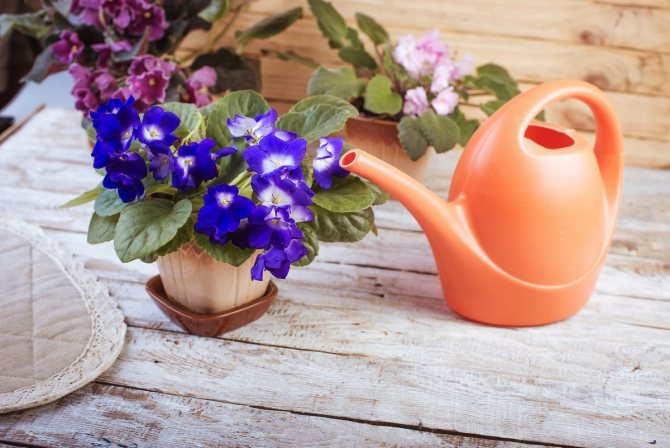
How and what to feed violets?
Features of care for Saintpaulias
Usambara violets, or Saintpaulias, are compact plants, strikingly decorative, with equally beautiful rosettes of velvety, pleasant to the touch leaves and unique flowering. Collected in shields, shining mother-of-pearl, simple, semi-double or double flowers create a unique "second tier" above the rosettes.
Saintpaulias are small, medium, and relatively large, neat and almost loose, strict and extravagant. There are no restrictions either in color, or in the shape of the leaves, or in the peculiarities of the structure of the flower in the varieties of this plant, numbering in the hundreds. But, despite all its diversity, Saintpaulias are always Saintpaulias.
The requirements for soil, replanting, lighting, temperatures, and care are always the same for them. And the plants cannot be called super-demanding or completely non-capricious: uzambara violets should be perceived not as complex, but as special plants that require a non-standard approach.
It is no coincidence that for all Saintpaulias, care is considered more important than growing conditions: if they can adapt to the difference in light and even temperatures, then improper care for these plants is almost always extremely traumatic. At best, Saintpaulias lose their decorative effect, at worst they die. Moreover, it is worth fearing any extremes - both insufficient and too diligent and careless care. Violets are equally demanding on the two main "points" in the program of regular care - watering and feeding.
Saintpaulias are considered indoor plants, very dependent on the composition of the dressings and the schedule for their introduction. The increased dependence on the fertilization schedule in favorite violets is influenced by two factors - a prolonged growing season and a rapid depletion of the substrate.
Prolonged growing season, often a complete lack of dormancy and flowering almost all year. Saintpaulias are not only abundant flowering plants, but also almost never dormant. With proper care, many bright and beloved varieties bloom for almost 10-11 months, and the need for fertilizing, unlike many crops for which fertilizers are applied only in spring and summer, also persists almost all year round.
Rapid depletion of the substrate. Saintpaulias are usually grown in small containers and even for their rather compact root system, the volume of soil to provide all the nutrients the plant needs is not enough. Plants will not bloom until thin roots fill the entire earthen ball. Therefore, it makes no sense to increase the volume of containers for them.As well as greatly increase the frequency of transplants: unlike many indoor crops, Saintpaulias are most often transplanted annually. In extreme cases - once every 6 months, if the roots have no room for development at all.
Even with this growing strategy, the need for feeding will be high. The nutrient supply in the substrate of a standard Saintpaulia pot usually lasts only 2 months.
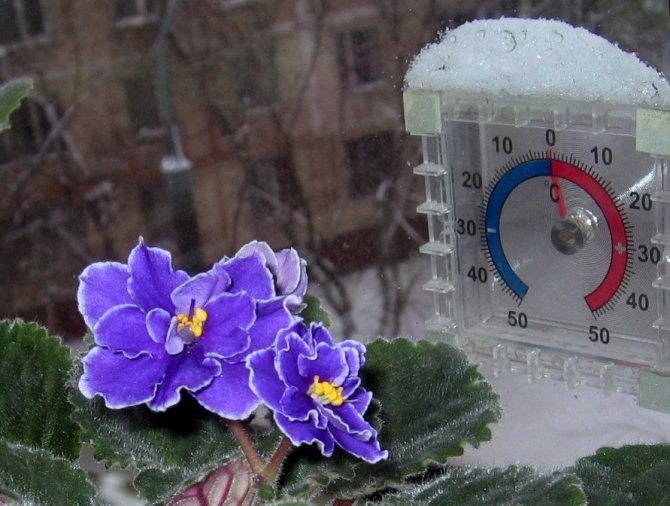

Violets bloom almost all year round, so you need to feed them not only in spring and summer, but also in winter.
Features of the content of violets
The violet flower prefers small pots, an adult feels well in a container with a diameter of 13 cm. The substrate should be loose, saturated with air and retaining moisture well. It is a mixture of peat, sand, humus, pine needles, moss. The optimum temperature is 20-23 ° C. In watering, a balance should be observed - do not overfill, but also do not let the soil dry out. For humidification, warm settled water is taken. Moisture should not get on the sheet plates. Better to water through the pallet. In winter, flowers need additional lighting.
Novice florists are always worried about the question - how to feed the violets? Lack of nutrients inhibits flowering. Buds are not formed among the numerous foliage. It is important to recharge on time and not overdo it. The flower does not like the abundance of trace elements, especially in winter.
When to feed violets?
If ordinary indoor crops are fed mainly in spring and summer, taking a break in feeding for almost six months, then violets are fed as much as they need - starting with the transplant procedure with a small "adaptation" period and until the end of flowering.
Feeding for Saintpaulias is influenced not only by the phase of their development. How often and how fertilizers are applied for these indoor babies should depend on several more factors:
- lighting;
- air temperature (feeding for Saintpaulias should be stopped when the air temperature drops to 16-17 degrees and below, because the development of the plant and the processes of absorption of macro- and microelements from the substrate in the cold completely stop);
- matching the size and shape of the container to the plant itself;
- the quality and regularity of watering.
For almost all violets, except for those that clearly stop growing, feeding should be carried out all year round, changing the concentration during periods of seasonal reduction in lighting and falling temperatures.
Folk remedies
Amateur flower growers do not always use store-bought preparations. Handy folk methods of soil enrichment are capable of giving excellent results:
Vitamin B12
It has a positive effect on the resistance of Saintpaulia to diseases. The ampoule is diluted in water (1: 10), introduced into the soil twice a season.
Yeast
Promotes intense growth of flowers. To strengthen the condition of the flower, they are often used. For this, yeast is combined with sugar, dissolved in heated water. After holding for three hours, after which the soil can be enriched. In summer - once a decade, in winter - once a month.
A valuable mineral that actively participates in the growing season and flowering. In the warm season, it is recommended to saturate the earth with it. Iodine tincture (1 drop) combines with water (3 liters). Seasonal irrigation is carried out three times.
Coffee grounds
Its remnants after drinking coffee loosen the ground well. The thick is mixed with the ground, poured onto the plant, after which the Saintpaulias are not irrigated for several weeks. Also noted is the property of the ingredient to increase the Ph.
With the help of onions, diseases and parasites are fought. Thanks to useful inclusions, the onion makes the leaves juicy, thick, and abundant flowering. For this, the husk is boiled covered - half an hour. The solution is kept for 8 hours. Used for spraying, foliar feeding. Prepare before use.
Sugar
Used to stimulate growth.Glucose is diluted in water and used for spraying. In this way, fertilize once a month.
Black tea
And more specifically, the spent tea leaves are simply crushed along the soil of the pots. Also used brewed for watering. Tea contains many useful substances and is a good alternative to other fertilizers.
Citrus
Rather, their skin is able to strengthen the immune system of the plant, ward off pests, and prevent the development of diseases. The peel is combined with boiled water, kept for a day, diluted with water (1: 10). Top-dressing is applied under the root system.
"Schemes" of dressings for Saintpaulias
The classic feeding scheme for Saintpaulias with continuous or almost continuous flowering:
- in March, after transplantation, fertilizers for Saintpaulias are applied once every 2 weeks;
- in April, feeding is carried out with a frequency of 1 time in 10 days;
- in May, the frequency of feeding is maintained once every 9-10 days;
- throughout the summer, feeding for Saintpaulias is carried out weekly;
- in September, the frequency of feeding is reduced to 1 time in 10 days;
- in October, feeding is carried out 2-3 times a month or the frequency is maintained once every 10 days;
- in November, feeding is carried out 1 time in 2 weeks;
- from December to transplanting at the end of February or March, 1 feeding per month is carried out for Saintpaulias.
There are simpler strategies for feeding violets:
- Classic dressing... Fertilizers can be applied starting from the third week after transplanting and until the end of flowering with the same frequency 2 times a month, with a break for a period after flowering and before transplanting.
- Permanent feeding... Low concentrated fertilizer solutions are applied constantly, carrying out top dressing along with irrigation (in fact, instead of it). In this case, the dosage is reduced by 6-8 times compared to the usual one. Typically, this strategy is used for the wick irrigation and feeding method.
If the Saintpaulias fade earlier, do not bloom at all, the conditions of their maintenance differ from the optimal and recommended ones, the frequency of fertilizing should be changed downward. If the plants are in supplementary lighting, they are left with the frequency of top dressing in the summer or early autumn, prolonging the period of more active care.
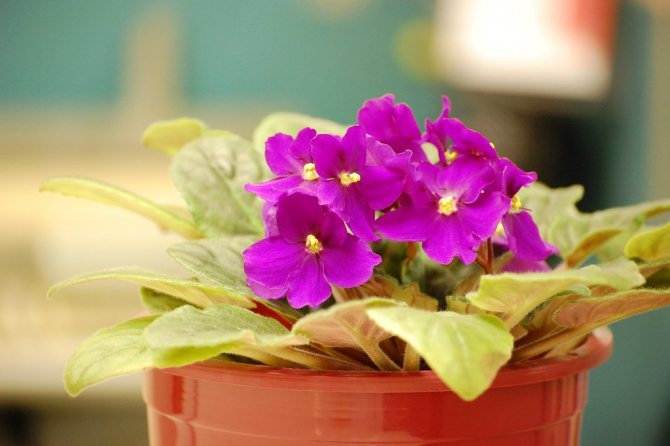

Today on sale you can buy special fertilizers for Saintpaulias - liquid, dry, in the form of granules or sticks (prolonged action). <我是>
Features of feeding after transplant
Immediately after transplanting, you should not start feeding for violets. Of course, you need to remember that 2 months after transplantation, the supply of nutrients necessary for normal development by Saintpaulia is almost completely depleted.
But plants begin to experience a lack of macro- and microelements much earlier, therefore, feeding is introduced into the violet care program a few weeks after transplantation. But not before the plant has adapted and started to grow. Usually, violets begin to feed 2-4 weeks after changing the soil and capacity, but this rule has its exceptions.
As in any other item for caring for uzambara violets, you always need to focus on the state of the plant itself and how it adapts in a new container and soil. If the violets are weakened, do not show signs of rooting, the transplant was urgent, due to the neglected state of the plant or the consequences of improper watering, and in all cases where there is a suspicion of being damaged by pests or diseases, feeding should not be carried out before making sure that it is fully restored plants.
If problems with Saintpaulias arise in the active phase of growth, feeding must be stopped before the threat to the plant itself disappears and it does not start actively growing again.
How to understand that a violet needs feeding
The absence or lack of the necessary trace elements can be judged by the appearance of the plant. As for violets, the need for feeding is expressed in:
- suspension of development (new leaves and peduncles do not grow);
- a decrease in the turgor of the stems;
- loss of elasticity of the petioles and leaf plate;
- lack or insufficient flowering;
- defects of buds.
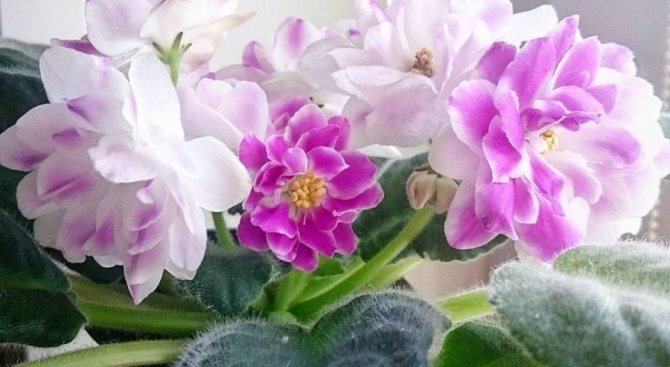

Blooming violet
Need to know! The same signs can appear if the plant is kept incorrectly. This includes damage to the flower by pests, violation of the temperature regime and irrigation regime.
Types of complex mineral fertilizers for Saintpaulias
Usambara violets are one of the most common indoor plants. And it will not be difficult to find special fertilizers for them, intended for Saintpaulias or at least the Gesnerievs. After all, they are in the product line of each manufacturer.
For Saintpaulias, it is always worth choosing fertilizers of "narrow specialization". Even in preparations for flowering indoor crops, the ratio of macro- and microelements differs from the ideal ones for this unusual plant.
Fertilizers for variegated or unusually colored violets should be selected more strictly: even among special fertilizers for Saintpaulias, it is worth choosing preparations with a low nitrogen content for the manifestation of bright patterns and variegated contrasts on the leaves.
It is not so easy to decide on the type and form of fertilizer for Saintpaulias. Fertilizers for uzambar violets are of 3 types:
- liquid;
- dry;
- long-acting fertilizers in the form of granules or sticks.
If possible, you should always choose liquid fertilizers for Saintpaulias. It is not only a matter of convenience, ease of dosage, but also much greater safety: fertilizers are distributed evenly during watering, there is less risk of burns resulting from the fact that fertilizers accumulate in large quantities in certain parts of the substrate.
Dry fertilizers also dissolve in water, but more time will have to be spent on creating "working" solutions. Not all fertilizers will dissolve in the same way, therefore it is difficult to talk about the same homogeneous composition of fertilizers and their distribution in water. But if you prepare working compositions in advance, mix them thoroughly before watering, adhere to general rules, you can achieve the same efficiency as when using liquid fertilizers.
Preparations with a fine, powdery, homogeneous texture will suit Saintpaulias much better, because they dissolve more evenly.
The use of any prolonged-release fertilizers for violets is undesirable. Both the granules that mix with the substrate and the sticks that are buried in the soil during transplanting make it easier to care for, but for such sensitive and delicate plants, they can be detrimental. Even with the choice of the safest preparations and their correct use, nutrients will penetrate into the soil unevenly, individual areas with a high concentration of macro- and microelements will lead to partial or complete damage to the roots.
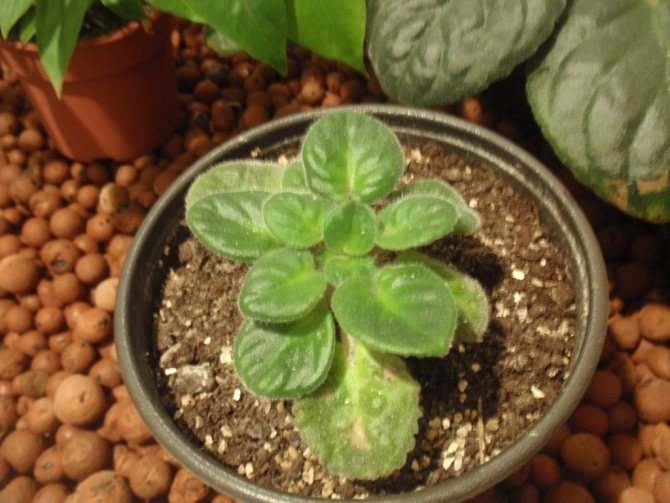

Immediately after transplanting, you should not start feeding for violets.
How to fertilize
The violet can be fed at the root or through the pallet. Leaf fertilizer is used in exceptional cases. As in other plants with a pubescent leaf plate, so in violets, the leaves lose their decorative effect when moisture gets on them.
Root dressing
Root dressing involves adding concentrate to the irrigation water. The water should be kept warm (warmer than room temperature). The solution can be poured under the root of a bush or into a tray. In the latter case, it is recommended to plant the flower in a deep tray with fertilizer and keep it there for at least 30 minutes. Then the pot must be returned to its tray, the excess liquid must be drained.
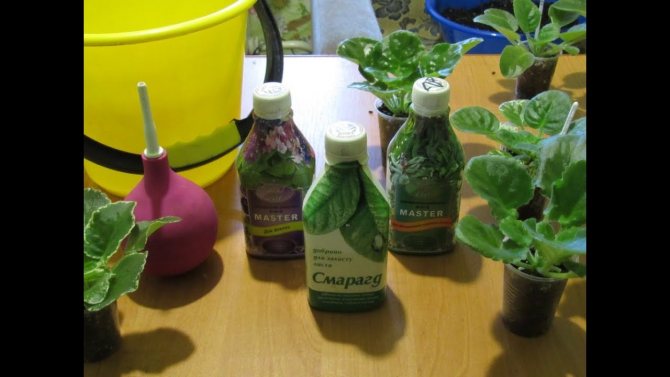

Feeding violets with purchased solutions
Foliar dressing
It should be clarified right away - leaf feeding requires some experience in breeding Saintpaulias. It is better for beginners to refrain from this method. The whole reason is in the structure of the sheet plate. It is loose and fluffy. Moisture remaining on the surface can lead to:
- to burns if the sun's rays fall on it;
- decay if the temperature regime is violated.
However, there are also positive aspects of this method. Fertilizers on the sheet protect the soil from salting. They penetrate the cells of the plant faster. Especially with a weak root system.
Before feeding violets on a leaf, you should study certain rules:
- the leaves of the flower must be clean;
- the procedure is carried out only in cloudy weather, in the morning or evening;
- conditions of detention should be optimal for this culture;
- the concentration of the nutrient mixture should be two times weaker than indicated in the description.
Experienced experts recommend using drugs such as:
- "Mister color-wagon" - 1 cap of the product for 6 liters of water.
- "Mister color-saintpaulia" - 1 cap for 4 liters of water.
Concentrates are also in demand by violet growers:
- the series "Doctor Foley";
- Bona Forte for violets and begonias;
- Peters Professional.
How to feed violets depends on the capabilities of the owner and the availability of drugs. Excessive feeding for violets is dangerous. Therefore, you should follow the instructions for use.
Wick top dressing
Wick feeding is especially suitable for transplanted babies. The design of the wick feeding option is very simple. This is a container (glass, jar) with fertilizer, where a flower pot is inserted. To absorb the nutrient solution, any string is released from the drainage hole of the flower pot. It should reach almost to the bottom of the lower container.
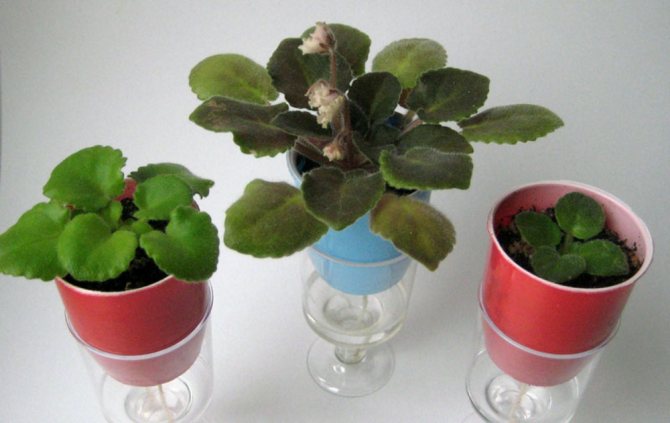

Wick feeding
Need to remember! The nutrient solution should be prepared twice as weak as indicated in the instructions.
It is important to alternate between feeding and rest periods. A young plant is fed by a string (wick) from the diluted fertilizer for a week. Then, over the next three weeks, clean water is poured into the glass.
Organic fertilizing for Saintpaulias
Despite the fact that uzambara violets react positively to organic fertilizers, it will not be possible to grow saintpaulias only on them. For Saintpaulias, it is permissible to alternate mineral and organic feeding, but the best care strategy is to replace regular feeding with organic feeding 2-4 times per season. And the fertilizers themselves must be chosen carefully.
Saintpaulias from organic fertilizers can be fed:
- dry mullein (manure, bird droppings);
- dry vermicompost;
- microbiological (EM) drugs;
- purchased organic fertilizers (humisol, etc.) for Saintpaulias.
Diseases and pests
Fungal infections, diseases and pests often affect flowers.
Disease / pest
Remedies
Leaves have yellow, round spots.
| Manifestation / Causes | ||
| Gray rot | A gray, fluffy bloom appears on the leaves and petioles. Temperature drop, abundant and frequent watering with cold water. | They are treated with fungicides (Fitosporin, Agate, Tiram). |
| Fusarium | The roots rot, the violet does not bloom, the leaves turn gray, then fall off. Abundant watering with cold water. | Apply Benomil, Fundazol. |
| Rust | Spots of yellow color on the outside of the leaves. Lack of sun in winter. | The infected parts are removed and Baktofit and Topaz are used. |
| Powdery mildew | White bloom on the plant. Lack of light, low room temperature, dust. | They are treated with Benlat. |
| Spider mite | Red dots. Dry air. | They use Apollo, Neoron. At the first stage, folk remedies: decoction of onion peel, vodka. |
| Cyclamen mite | ||
| Aphid | Green insects, they drink the juice from the plant. Carrying out the plant to the street or contaminated soil. | Apply Mospilan, Intavir. |
| Scorms | There are red, small spots on the violet. Dry air. | Spray with soapy water, Fitoverm. |
| Shield | The leaves are red-brown below, yellow above. Infected from a new plant. | Young violets sometimes have to be destroyed, insecticides (Karbofos, Aktar) help adults. |
| Thrips | Light brown pollen on the plant. Airing, another flower. | They are processed with Fitoverm. |
Unconcentrated dressings are always better
The correct choice of fertilizer concentration is a key factor in the care of any Saintpaulia. The slightest excess of permissible dosages and contact of roots with concentrated preparations cause burns and serious damage to the roots. It is better to feed Saintpaulias with non-concentrated fertilizers than to take risks with an increase in dosage.
The standard for any Saintpaulias is the dosage of complex mineral fertilizers specially designed for the plant, containing both macro- and microelements:
- 1 g of top dressing, diluted in 1 liter of quality water for irrigation with a frequency of 15 to 20 days (or the full dose indicated by the manufacturer);
- 1 g per 2 liters of water for fertilizing with a frequency of 7-10 days (or half the recommended portion reduced by half);
- 1 g per 3 liters of water for fertilizing with a frequency of 5-6 days (or three times the recommended rate);
- 1 g per 6-8 liters with constant fertilization along with watering (the dosage is reduced by 5-8 times).
For organic fertilizers, the dosage should be determined by the type of fertilizer and its characteristics. Purchased preparations, especially special fertilizers for Saintpaulias, are used in accordance with the manufacturer's recommendations.
Microbiological preparations are diluted at a concentration of 50 ml per 10 liters of water. Dry humus is used in the form of mulch on the soil, evenly scattering about 2 tablespoons per plant on the surface, followed by abundant watering.
Mullein, manure, bird droppings are first diluted to a concentrate (200 g of dry manure or 50 g of bird droppings per 10 l of water with the addition of 1 g of copper sulfate), the fertilizer is kept for 1 month and then 100 g is used per 3 l of water.
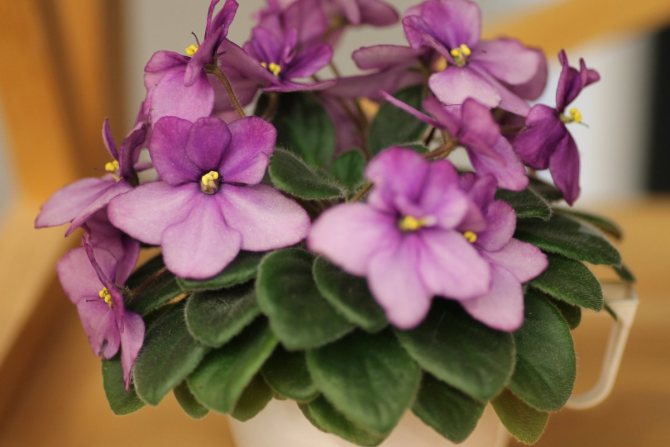

The frequency of feeding Saintpaulias is influenced by both lighting and air temperature.
What mineral components do violets need
When and how to fertilize violets for abundant flowering depends on the needs of the culture. The most versatile fertilizer is superphosphate. Nitrogen in its composition contributes to the growth of green mass, and phosphorus provides flowering.
How to feed fuchsia for abundant flowering
Granular dressing is applied at the rate of 1 tsp. per liter of soil mixture. With each watering, a certain proportion of the fertilizer will dissolve and feed the flower. To bloom and stay under the buds for a long time, the violet also needs potassium.
It is most convenient to use special fertilizers for home saintpaulias. They differ in application periods. Before flowering, it is better to add nitrogen-containing, and the entire flowering period - potassium, phosphorus.
Important! All fertilizers must be used strictly according to the instructions. You also need to know that the flowers should be watered abundantly a day before feeding.
Fertilization rules for violets
Regularity and consistency
It is important to feed Saintpaulias evenly - systemically, regularly, with equal or evenly varying intervals between treatments. Even if the plant is in a depressed state or there are certain difficulties with its flowering, it is better to carry out top dressing regularly, but regulate their composition, concentration, time, rather than refuse dressing.
Only if we are talking about diseased and unrooted plants or violets affected by an excess of nutrients, it is worth stopping feeding altogether.
Compliance with irrigation
The fertilization method should be the same as the usual irrigation method - wick, submerged or classic neat top irrigation.
Top dressing only on wet soil
Despite the fact that fertilizers for violets are usually applied along with water for irrigation, feeding on a dry substrate is a big mistake.Like many plants sensitive to abrupt changes in conditions, prone to root burns, Uzambara violets require the most careful approach to the procedure for feeding and fertilizing pre-moistened or constantly moist soil.
To avoid the risk of burns or any damage to the roots due to inaccuracy, the violets are first watered with a small amount of water, restoring the stable moisture habitual to the plant, and only then top dressing is applied. To avoid overflow and excessive soil moisture, it is convenient to fertilize 1 day after watering.
The best dressing is evening
Any violets, even those grown in soft and diffused lighting, respond better to feeding if they are carried out in the evening.
Optimum temperature of solutions
It is better to strictly control the temperature of fertilizer solutions for Saintpaulias. For uzambar violets, watering with cold water is contraindicated, and if fertilizers are added to the water, you should make sure that its temperature is equal to or 1-2 degrees higher than the temperature of the substrate and air in the room. You should not feed the violets with too warm solutions: an increased temperature is usually associated with an increased risk of root burns.


Foliar feeding of violets can only be carried out using fog sprayers and very carefully
Foliar dressing for violets
Only with sufficient experience and the presence of "foggy" sprayers can foliar feeding of violets be carried out. They are especially good for decorative foliage varieties. But with such dressings, you need to be very careful, avoiding waterlogging of the leaves and using them only on healthy, well-groomed, clean plants.
The concentration of fertilizers is reduced by 2 times in comparison with root dressings and these procedures are carried out only in the evening. Foliar subcortexes are replaced with the usual ones no more often than 3-4 times in the spring and summer.
How to water homemade violets to bloom profusely
How to feed rhododendron after flowering
How to feed violets for abundant flowering at home is of interest to both experienced florists and beginners. To maintain health and lush flowering, various fertilizers are suitable for a indoor flower. In addition to special purchases, you can use organic additives, folk remedies. It is important that they are aimed at eliminating the lag in flower development.
Note! An oversupply of any fertilizer will not lead to a good result. For Saintpaulias, a lack of trace elements is a lesser evil than an excess of them.


Correct care
Ready complex fertilizers
Complex fertilizers can be granular (superphosphate) and liquid. Liquid dressings are marked with special inscriptions: "for violets" or "for saintpaulias". All proportions for use are indicated in the description. It is enough to follow the instructions.
For long, lush flowering, flower growers use the following means:
- Fertika;
- "Kemira";
- "Fasco";
- "Mister color-wagon".
Their composition is balanced especially for indoor Saintpaulias. The predominance of potassium and phosphorus ensures a bright, long flowering.
Organic matter (manure, vermicompost, etc.)
From organic fertilizers, you can use manure. Animal waste is used in a highly diluted manner. First, a concentrated solution is prepared, kept warm for 3-5 days, diluted in a ratio of 1:10 with water for irrigation.
Ready-made vermicompost is also on sale. Fertilizers based on humic acids enhance the effect of minerals, improve the structure of the soil. It is recommended to adhere to the proportions indicated in the instructions.
Folk remedies
Over the years, growing violets, flower growers have learned how to prepare nutrient solutions from improvised means. Use fruit waste, tea leaves, coffee grounds. Sugar water has shown itself well.
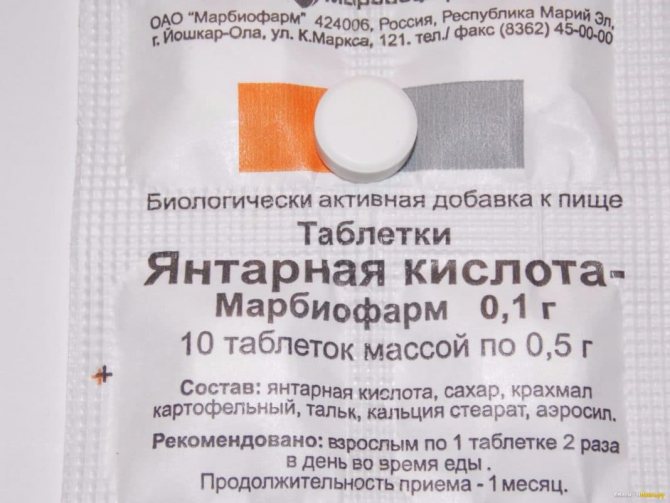

succinic acid
Pharmacy products, for example, succinic acid, are also not bypassed.Powder diluted in water promotes better assimilation of soil nutrients. In addition, succinic acid helps the violet resist the influence of an aggressive environment. For feeding, 0.5 g per liter of water is enough.
Sleep tea
A useful fertilizer for violets is tea leaves. You can water the flower with undrinked tea or use dry (dormant) tea leaves. Tea contains many useful elements. Watering a couple of times a month will bring undoubted benefits.
The liquid phase of the infusion should be poured simply under the root of the flower, and the sleeping residue should be buried in the soil. So after each watering, he will give off nutrients.
Note! Sometimes it is recommended to pour the tea leaves on top of the soil, but often this ends up with the reproduction of midges.
Coffee grounds
Coffee grounds also contain a lot of useful things. In addition, it increases the acidity of the soil and improves its structure. It is better to mix the thick into the soil during transplanting or drop it under the root of the flower.
Yeast solution
Yeast contains a large number of beneficial bacteria that stimulate the growth and flowering of the crop.
Solution composition:
- dry yeast - 5 g;
- water - 0.5 l;
- ascorbic acid - 1 g;
- sugar - 15 g.
Yeast solution is used only once a month and then only in summer.
Attention! The yeast solution leaches out calcium and potassium. Therefore, their number should be replenished.
Glucose
A powerful source of energy is glucose. It can be used as a top dressing all year round. It is especially important to support the plants in winter lighting. You don't need to overdo it. It is enough to feed the bushes once a month. The solution is prepared from 0.5 liters of water and 1 tbsp. tablespoons of sugar.
The need for glucose can be understood if:
- leaves lose color;
- no flowering;
- the bush does not grow.
Interesting! Young Saintpaulias especially need sugar.
Vitamins and iodine
Iodine is rarely found in fertilizers. Moreover, it is extremely important for violets. The use of this trace element:
- accelerates metabolic processes;
- stimulates the growth of green mass;
- provides abundant flowering;
- gives brightness to the color of the buds.
In the natural environment, plants receive iodine from the air, but in the home air it is not. Therefore, it must be entered separately. The solution is prepared from 1 drop of iodine and three liters of soft water. It is enough for them to fertilize the flower twice a year (in spring and summer).
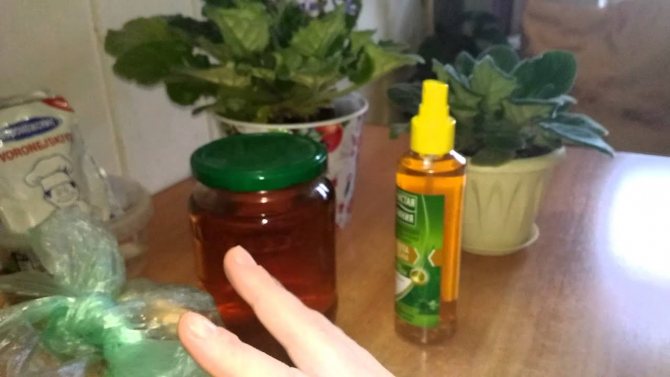

Iodine as top dressing
Eggshell Calcium Powder
Lack of calcium can be compensated by using eggshells. It can be used in different ways:
- insist water for irrigation;
- plant in a flower pot instead of drainage;
- mix the shell powder into the planting soil.
To avoid contamination of the soil, the shell must be thoroughly washed and dried before use.
Banana peel
Banana peels are rich in potassium and manganese. For feeding, an infusion of the peel is used. It is simple to prepare the solution - any number of skins is poured with any volume of water. You just need to keep it warm for 2-3 days. Then it can be used for feeding, but on the soil watered with clean water. The frequency of use is once a month.
Onion dressing
Onion peel infusion is also rich in nutrients. It is not difficult to cook it - the husk is poured with hot water, cooled, watered the flower. Can be used monthly.
Citrus peels
There are many different vitamins in citrus peels. They can be usefully used to feed home flowers. The peel of the fruit is poured with boiling water, kept for a day, diluted with clean water in a ratio of 1:10. The solution is ready. You can water every 2-3 weeks.
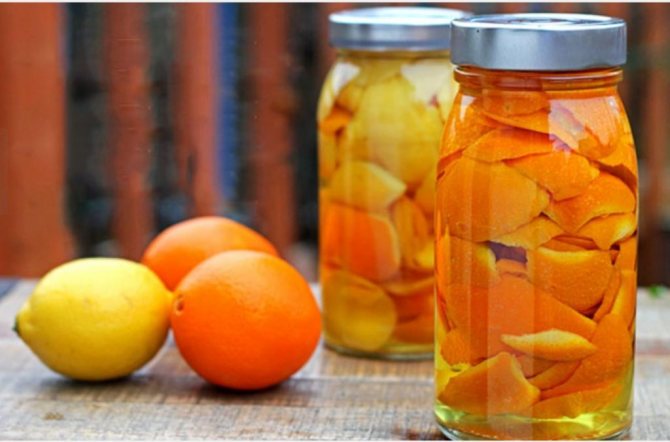

Citrus peel infusion
Infusion of garlic
Infusion of garlic is more useful at a water temperature of + 34-36 degrees. For one liter of warm water, 1 crushed garlic clove is enough. The infusion is kept for 2-3 hours, filtered and heated to the initial temperature. The flower can be watered with a solution 1-2 times a month.
Ash
Ash contains an impressive amount of phosphorus and potassium. In addition to them, ash is rich in magnesium, boron, sulfur, calcium. All this is very useful for the violet. The solution is prepared from 1 tbsp. l of ash and 1 liter of water. Can be used after three hours of infusion. It is acceptable to apply every 10 days.


Ash infusion
Potassium permanganate
The main components of potassium permanganate are potassium and manganese. Both elements are vital for the violet. It is very useful to water the flower with a slightly pink solution of manganese every 2 weeks.
Testimonials
Igor. “Everyone knows that our violets also need nutrients. They grow in small pots where the soil is quickly depleted. Therefore, in the summer, I feed very often. For years I have entrusted my violets with Fasco fertilizer, and the result is noticeable: the plants do not get sick, they look great and bloom for a long time. This is the optimal feeding for violets. "
Olga. “After winter, I began to water my Fusco flowers for violets. They just outlived, finally began to gain color and even released buds. In general, my flowers are happy. This year I planted many children and also began to water with this drug, only I dilute it twice so that the roots do not burn out. The children have grown stronger, they regularly release new leaves. I definitely recommend this fertilizer! "
Love. “The label clearly states how and when it is best to feed the flowers. I did so, taking turns watering the ground, then sprinkling the leaves. I spray it on both sides, as trace elements are better absorbed from the lower side. The air in my apartment is very dry, so spraying is beneficial. Previously, I did everything according to the instructions, but with experience I began to do, as it seems to me, better for plants. One violet categorically did not want to bloom, but here it bloomed for the first time, it was a real miracle. It can be concluded that the drug really works. "
Saturating Saintpaulia for flowering
In order for violets to bloom and delight the eye, it is worth remembering a few rules:
- Over-saturation is not allowed. The plant grows in nature in poor soils. Therefore, the dilution of the mixture and use should be carried out strictly according to the instructions.
- At the same time, it is forbidden to introduce organic matter and minerals. Everything is done sequentially, observing the stages of development.
- The area for growth and development in violets is limited, which means that the time gap should be the same between applications.
Complexes of both organic and mineral origin are popular.
The first positions are always taken by means and compounds, where the main components are in an easily accessible form. It is advisable to observe alternate watering.
Folk remedies
50% of flower growers have long abandoned purchased fertilizer mixtures, while choosing improvised means that are in every home.
Tea leftovers
The tea leaves help the violets become stronger and the roots stronger. Suitable for adding black tea in dry or brewed form. Dry leaves can be crushed, poured into the ground. Then loosen the soil a little.
In a liquid form, the tea leaves are made weak, carefully poured into the tray.
The used brewed coffee retains the elements necessary for active growth and development: copper, potassium, magnesium. The thick also helps to loosen the soil, which helps oxygen to penetrate to the roots. Dry mass is used.
For application, mixes 1 to 1 with soil. There is one "but": it is not recommended to water after such feeding for 2-3 weeks. The frequency of procedures is no more than 1 time in 3 months, since coffee grounds increase the acidity of the soil.
Yeast liquid
Strengthening the root system is better if you add sweetness to the soil. Yeast and sugar are used. Ratio: 5 g dry yeast / 2 tbsp. l. Sahara. Mix and dilute gradually in warm water (5 L).
Insulate the dough with a towel, cover and leave to infuse for 3 hours. The resulting concentrate is diluted 1 to 5. Regularity during the growing season: every 10-14 days.
Sugar water
This recipe is used in winter when the violet is sleeping. The solution helps to winter more calmly, to wake up faster.
It is prepared as follows: stir 2 tsp for 1 liter of warm water. Sahara. Processing takes place in the form of irrigation.
Vitamins and iodine
Not all elements will help to increase the plant's resistance to diseases and infections. But the cheapest and simplest remedy was found: diluted vitamin B 12.
The working fluid will be beneficial at a dilution of 1 to 10. It will take only 2 treatments to get a good result: spring upon waking and summer after flowering.
There is an option when iodine is used instead of a vitamin. 1 drop of the drug diluted in 3 liters is sufficient. During the season, it is poured into the pallet or under the root three times.
Mineral dressing
Of simple or one-component, ammonium sulfate, urea, ammonium nitrate, superphosphate and potassium salt are suitable. Application as needed (if there are signs of a deficiency of one of the main micronutrients).
Most often, it is recommended to use special or universal complex fertilizers for violets. The first option is designed directly to improve the flowering and well-being of violets.
REASIL
Refers to organomineral. It has a rich composition, which, in addition to nitrogen, potassium and phosphorus, is for:
- accelerating the metabolism of B vitamins (1, 3, 12);
- normalization of photosynthetic processes humic acids;
- activation of the absorption of minerals citric, succinic, lactic and gluconic acid;
- stimulating the growth of amino acids.
During the preparation of the working fluid, the rule of multiplication by 2 is observed:
- root feeding - 5 l of water + 5 ml of substance;
- foliar - 10 l + 5 ml.
Fasco
Pour in every 2 weeks. Strict breeding instructions are followed. The drug contains all the necessary trace elements.
Flower heaven
It is used to improve the decorative qualities of violets and increase the number of buds. The ratio for the preparation of the solution: 100 ml is stirred for 1 liter of water. You can deposit in any way.

